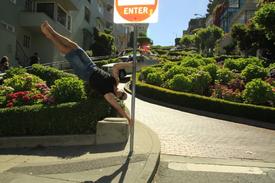What's the science between high carb cycling?

SPNLuver83
Posts: 2,050 Member
On leangains.com they recommend eating a higher amount of carbs (over fat) on your lift days, and a higher amount of fat (over carbs) on non-lift days.
Can anyone break down the science behind this for me?
I've started to do this, well at least try, just wondering if it actually makes a difference.
Can anyone break down the science behind this for me?
I've started to do this, well at least try, just wondering if it actually makes a difference.
0
Replies
-
Got yo back homie
 for starters it has a lot to do with the energy systems during different modes of exercise. At leangains.com the primary workout protocol seems to favor alternating lift days with cardio days. That means on the days you lift the main energy system being used (for exercise) is anerobic glycolysis which relies heavily on carbohydrates to make energy for the working muscles (ATP). So if your nutrition includes more carbs then BAM you get better energy production for that mode of exercise. And on non lift days the body will not require so many carb sources for energy so fat (the oxygen energy system used to make ATP) makes better sense since its the energy the body will be favoring during aerobic activity AND rest. PS, stealing your question cuz it was a good one. YOINK!! 0
for starters it has a lot to do with the energy systems during different modes of exercise. At leangains.com the primary workout protocol seems to favor alternating lift days with cardio days. That means on the days you lift the main energy system being used (for exercise) is anerobic glycolysis which relies heavily on carbohydrates to make energy for the working muscles (ATP). So if your nutrition includes more carbs then BAM you get better energy production for that mode of exercise. And on non lift days the body will not require so many carb sources for energy so fat (the oxygen energy system used to make ATP) makes better sense since its the energy the body will be favoring during aerobic activity AND rest. PS, stealing your question cuz it was a good one. YOINK!! 0 -
Based on insulin release for the 2. The less insulin the more fat is used as energy.On leangains.com they recommend eating a higher amount of carbs (over fat) on your lift days, and a higher amount of fat (over carbs) on non-lift days.
Can anyone break down the science behind this for me?
I've started to do this, well at least try, just wondering if it actually makes a difference.
A.C.E. Certified Personal and Group Fitness Trainer
IDEA Fitness member
Kickboxing Certified Instructor
Been in fitness for 28+ years and have studied kinesiology and nutrition0 -
wuts the science behind leangains IF? bout the same as eating 6meals a day.0
-
Martin Berkahn has never offered an explanation of his opinion on the issue, that I'm aware of.0
-
I am not aware of any appreciable direct advantage but would love to see the explanations.0
-
I have no comment on the matter.0
-
This is my understanding and interpretation.
My base macro which I follow are: 55% carbs; 20% fat; 25% protein. I follow this setting when I am sedentary or performing a light day (3 mile runs or less + weights).
On my long run days (9+ miles), my macros take on the following: 60% carbs; 20% fats; 20% protein. On really, really long days, my macros will follow: 70% carbs, 15% fat, 15% protein.
As my distance in running increases, my overall calories increase. Carbs are my primary food when running. As my overall calories increase, my carbs source become primary. When graphing this, it appears my fat and protein percentages drop. This is not the case. It is my understanding my carbs become such a huge requirement that my overall percentages of fat and protein decrease. This is my understanding of high carb cycling.0 -
Basically glycogen is used by the body for lifting and when not lifting, we don't need as much.0
-
IMO it's a way for Berkhan to differentiate himself from other IF styles to make it a bit more exclusive.
I've done it and I've done flat cal/carb days and I've done a variation of CBL. Cals in vs out is what matters most. (I always get enough P&F)0
This discussion has been closed.
Categories
- All Categories
- 1.4M Health, Wellness and Goals
- 398.1K Introduce Yourself
- 44.7K Getting Started
- 261K Health and Weight Loss
- 176.4K Food and Nutrition
- 47.7K Recipes
- 233K Fitness and Exercise
- 462 Sleep, Mindfulness and Overall Wellness
- 6.5K Goal: Maintaining Weight
- 8.7K Goal: Gaining Weight and Body Building
- 153.5K Motivation and Support
- 8.4K Challenges
- 1.4K Debate Club
- 96.5K Chit-Chat
- 2.6K Fun and Games
- 4.8K MyFitnessPal Information
- 12 News and Announcements
- 21 MyFitnessPal Academy
- 1.5K Feature Suggestions and Ideas
- 3.2K MyFitnessPal Tech Support Questions








